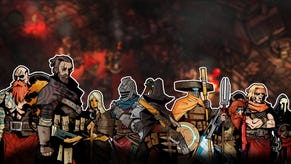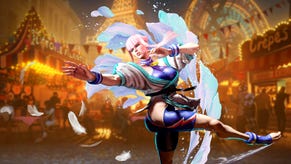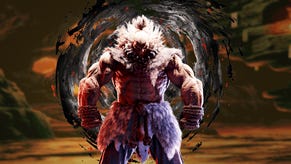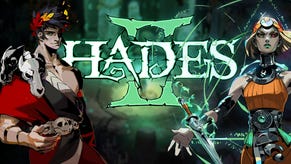Five Critical Moments in Platform Game History
Ever since Donkey Kong combined a set of disparate game mechanics to create the first modern platformer, the genre has evolved in leaps and bounds. But what were its most significant steps forward? Jeremy Parish investigates.
This article first appeared on USgamer, a partner publication of VG247. Some content, such as this article, has been migrated to VG247 for posterity after USgamer's closure - but it has not been edited or further vetted by the VG247 team.

The Moment When Platformers Became More Than Just Running and Jumping
Donkey Kong may not have been gaming's first example of platformer -- that is, a game in which the protagonist runs and jumps across platforms -- but it was the first to matter. And the first truly meaningful follow-up came from Activision designer David Crane, who gave the world Pitfall! the next year.
Pitfall! didn't involve quite as many actual platforms as Donkey Kong had, but it certainly featured plenty of running and jumping. Rather than navigate broken bits of girder in a ravaged construction site, Pitfall! took a cue from Raiders of the Lost Ark and sent a lone adventurer dashing across a jungle in search of treasures, dodging alligators, scorpions, and (why did it have to be) snakes. Be it leaping over pits, swinging across pools of quicksand, hopping across the heads of 'gators like a bad James Bond set piece, Pitfall Harry used his platforming skills in pursuit of a different kind of game than his single-screen arcade contemporaries.
Pitfall! feels admittedly primitive compared to latter-day platformers, with flip-screen scrolling and simple two-level world design, yet it marked an important moment not only for the genre but for the medium at large. It introduced the idea that fast-paced action games could take place in settings rather than simply exist as isolated scenarios. Pitfall!'s quest dropped players into a jungle maze, one whose simple visuals belied structural complexity (traveling underground took you along a different route than going overland) and required both twitch skill and mental discipline to master.


These ideas didn't really and truly come into their own, however, until the sequel. Pitfall II: The Lost Caverns took a bold step forward for action games, giving players a massive non-linear playground in which to poke around. It pushed the limits of the humble Atari 2600 (even going so far as to include a custom co-processor in the cartridge, similar to what Nintendo would do to extend the functionality of NES and Super NES games) while incorporating some decidedly forward-thinking design concepts into the basic framework of the original Pitfall!
For starters, Pitfall II dispensed with the concept of limited lives; Harry now could spelunk to his heart's content, and the only consequence to a poorly executed run-in with the hazards of nature would be to lose some points he'd earned from treasure while being cast back to a checkpoint -- one of the first-ever instances of an in-game check point. The entire adventure was the same score-chasing treasure hunt as the first Pitfall!, but exploded into a much more elaborate world.
Where Pitfall! consisted of a seemingly endless line of screens linked side-by-side, Pitfall II's world was only eight screens wide. However, its underground caverns descended a whopping 27 screens downward, with three tiers of platforms in most screens rather than the two levels of Pitfall!'s design. Screens interconnected with one another on different levels, rendering the underground an intricate maze. Further complexity came in the form of elements like the balloon, which players could use to ascend the cave's central chasm to reach otherwise inaccessible areas. While it's entirely possible to complete the game with a perfect score in slightly more than 10 minutes....
...learning the ins and outs of the adventure and mastering the design of the subterranean labyrinth required hours of effort and most likely a detailed map on graph paper. Even with the unconventional lenience of the checkpoint system, truly mastering Pitfall II was far more difficult than completing its comparatively simple predecessor.

Pitfall II did abandon some popular conventions of its predecessor -- no more snapping alligators, no more swinging across vines while yodeling like an 8-bit Tarzan -- but these sacrifices were tradeoffs that made for the biggest, most intricate game ever seen on Atari's aging 2600 console. Its special built-in processor chip allowed it to incorporate dynamic, harmonized background music, something unheard of on the 2600. And when the game made its way to other platforms, the programmers behind those ports even added in a special "second quest" that revamped the labyrinth layout and boosted the difficult of enemy patterns.
Most importantly of all, though, Pitfall II brought Pitfall!'s exploration together with genuine platforming: Completing the game required not only hops to evade enemies and cross pits, but also huge leaps to reach out-of-the-way secrets and areas. Plus, Harry now gained the ability to swim. In the style of non-linear platformers to come, such as Metroid, there was no such thing as death by falling; dropping into a pit simply led Harry to another screen, and a vast underground lake lined the bottom of the game world. In many ways, it was a game years ahead of its time.

Of course, as often happens when sophisticated design meets limited technology, Pitfall II suffers the ravages of age. The 2600 version in particular suffers from incredibly repetitive graphics, making the underground maze much more difficult to navigate than it might otherwise be. Just about every screen beneath the surface of the jungle looks practically the same as any other, with only minor details to differentiate it from the adjacent room. Even with his special add-on chip, Crane was up against hard limitations of 2600 cartridge storage space.
Still, despite its shortcomings and the, shall we say, pitfalls of programming or 2600, Pitfall II was an incredible piece of game design that marked an important moment in the evolution of the platformer genre. While it ended up being somewhat overlooked compared to its predecessor thanks to arriving in the midst of the U.S. video game industry's tragical collapse, it definitely shouldn't be forgotten.

The Moment When Platformers Realized They Didn't Need Running and Jumping
If, as I stated in above in my examination of Pitfall II, the platformer genre really does center around controlling characters who run and jump, does a game in which the protagonist rarely runs and doesn't need to jump properly count?
Activision's H.E.R.O., designed by John Van Ryzin in 1984, brought a budding genre its first existential crisis. H.E.R.O's protagonist, Roderick Hero, didn't need to worry about such mundane matters as climbing ladders and avoiding falling damage; the man could fly. In fact, the game's acronymous title stood for "Helicopter Emergency Rescue Operation"; Roderick got about by way of a self-contained gyrocopter backpack. He could run along the ground, sure, but why bother when he could simply go by air instead?


H.E.R.O. brought a new dynamic to the platformer: The need to function in two dimensions. Despite being 2D games, platformers before H.E.R.O. only really operated on a single plane. Donkey Kong and Pitfall!, for example, incorporated ladders and pits as incidental hazards and forced you to jump or duck to avoid enemies -- but aside from those limited vertical movements, the action really existed on a horizontal planes. Donkey Kong Jr. switched it up, emphasizing the verticality of climbing vines, but in return the horizontal aspect of the game took a back seat (Junior was not much to control on the ground).
With H.E.R.O., on the other hand, players gained the ability to move freely in all directions. Moreover, threats appeared above or below Roderick at any given time; because he could fly at will, strictly ground-based enemies would have posed little threat. Thus obstacles and threats could appear at any position in the playing field, requiring deft maneuvering to dodge or destroy them.
Fittingly, H.E.R.O. didn't go with the standard side-scroller approach to level design; most of its action instead consisted of descent. Roderick's task was to fly down into a series of mine shafts in order to locate and rescue trapped miners. Enemies appeared along the way, and many passages were blocked off by walls. H.E.R.O.'s challenge came not only from the need to dodge bad guys -- per usual for the era, simply touching a foe, even something as innocuous as a tiny bat, would cost a life -- but also to determine the correct path through a stage.
Resource management played a key role in Roderick's quest, too. He entered each stage with a limited amount of power and dynamite; the latter could shatter certain walls, while the former would drop any time he took flight. Running out of either resource would render a stage essentially unbeatable, forcing players to sacrifice a life to start over. Most screens offered two paths forward, but only one was the "correct" path; the other would usually lead to either a monster obstructing the passage or else would throw too many obstructions into Roderick's way, forcing him to squander his dynamite. Adding to the difficulty was an early take on dynamic lighting similar to Elevator Action's: By damaging the lantern illuminating an area, you'd plunge the screen into darkness, forcing you to navigate by either memory or luck.

At the same time, Roderick wasn't entirely helpless. H.E.R.O. plays as much like a rudimentary shooter as it does a rudimentary platformer, and your helicopter apparatus can fire a thin laser beam from just below its propellers. This is sufficient to take out the creatures you meet en route, but it does require careful aim as the beam is narrow and the caverns' denizens move quite quickly. The game is somewhat easier on computer platforms than on the original Atari 2600 hardware, since their superior resolution gives a clearer view of the action. But the game remains entertaining on any platform -- not to mention challenging. The 20 different stages quickly increase in complexity and threat level, and if you somehow manage to reach the end you just start over in a much harder second cycle.
In its small way, H.E.R.O. helped liberate an entire genre from the surly bonds of gravity and the tyranny of jumping. And its legacy lives on today. Everything from Bionic Commando to Bangai-O owes a debt of gratitude to Activision's classic (if largely forgotten) platformer-that-wasn't.

The Moment When Platformers Became Ludicrously Ambitious
After Pitfall! protagonist Pitfall Harry mastered the ins and outs of his first journey and became tremendously wealthy from all that gold he gathered from across the jungle, he went on to have an even grander adventure with his niece Rhonda and her pet wildcat Quickclaw in tow. In other words, Pitfall Harry sold out and went family-friendly in pursuit of even greater wealth and fame.
Over in the UK, however, Harry's equivalent was an adventurer by the name of Miner Willy, whose first outing -- Manic Miner for the Sinclair Spectrum microcomputer -- proved to be a Pitfall!-sized hit within that market. Like Harry, Willy became fabulously rich from his debut adventure. But rather than going all Disney on his fans, Willy's second adventure saw him wallowing in the depths of new-money decadence. Rather than set out to be a role model for his younger relatives, Willy appeared on his sequel's box art hunkered over a toilet, clearly emptying the contents of his stomach into the porcelain bowl even as he clutched a bottle of champagne. His sprite may have traded in a hardhat for a porkpie, but Willy remained anything but upper crust.


I know, America, I know. You hear "Great Britain" and think of posh things like elaborate royal weddings, Downton Abbey, and time-travelers wearing funny bow ties. But it turns out that technicolor yawns following a night of hard partying are an integral part of English life as well, and Jet Set Willy gleefully embraces its protagonist's blue-collar nature (the guy was a miner, after all) by giving what is probably a pretty realistic take on how a workaday joe who stumbled into unbelievable wealth would follow things up: By buying a home too large for himself, wrecking it with extravagant parties, and finding himself hungover the next day. Think Jesse Pinkman minus the existential despair.
Jet Set Willy saw the hapless ex-miner forced to shuffle through his enormous new home cleaning up after his friends' excesses of the previous night. You'd think that might be his housekeeper's job, but she's actually the one who instigates the whole adventure, refusing to let Willy retire to his bedroom until he's tidied up after himself. Lord Grantham would never accept such demands, but, well, that's the nouveau-riche for you. Spineless.

Complicating matters was the fact that Willy evidently purchased his new home sight unseen, and it contained countless rooms he'd never visited -- all of which, for some reason, were horrifyingly haunted by all manner of bizarre apparitions. These included gigantic demon faces, chainsaws buzzing along through the floorboards, outsized spiders, and more. And in that regard, at least, Willy didn't differ too much from his classier Yankee counterpart Harry: One hit from any of these creatures and he was a goner.

Unlike the methodical Pitfall series, however, Jet Set Willy was fast-paced, relentless, and distressing. Everything moved at an insane clip, and each screen of the mansion packed an enormous amount of content -- countless platforms and other climbable bits of scenery, and sometimes more than half a dozen creatures zipping along their own predetermined paths. It was fiendishly difficult.
Admittedly, it came about some of that difficulty in a less-than-sporting fashion. Even discounting the game-breaking bugs with which the adventure originally shipped (corrected via code updates distributed by the creators -- perhaps the industry's first example of "we'll fix it in the patch"), Jet Set Willy had a tendency to play unfair. The hero could shuffle between rooms from practically any point at the edge of a screen, often including the top and bottom edges, and it was all too easy to make a transition into another room in a fatal position (due to monsters, pits, or other hazards) and quickly burn through your stock of lives. There was a lot of guesswork involved in mastering the game, which wasn't really helped by untelegraphed death traps like the arrows that flew in from off-screen while exploring the roof.

On the other hand, it's hard to be too critical of the game considering just how preposterously ambitious it was. Though considerably smaller in terms of actual real estate than Pitfall II, Jet Set Willy was far more elaborate -- not to mention varied. Despite beginning life on the ZX Spectrum, a system with severely limited graphical capabilities, Jet Set Willy managed to present players with a fanciful but actually somewhat sensibly laid out mansion, with logical relative placement for its rooms. High above Willy's bedroom was the attic, above which you could scamper across the roof; to the east was a garden dominated by an enormous tree, while the western side of the mansion featured a dock complete with a small explorable yacht. Despite the abstraction imposed by the Spectrum's rudimentary visuals, Willy's home managed to be quite evocative.
It helped that each locale in the building was labeled; each screen of the adventure included its own name. Some of these simply explained where you were ("The Forgotten Abbey"), while others were simply meant to be amusing ("Dr Jones will never believe this," where the scenery roughly resembled a giant pink snake). And then you had more enigmatic locales, like the "Nightmare Room" in which Willy inexplicably transformed into a strange winged rat while being haunted by clones of his maid.
Many elements of Jet Set Willy would resurface in many other games throughout the years -- for instance, the Castlevania series' commitment to creating somewhat logical architectural connections within its settings -- but the game was much more directly influential than that. Microcomputer-based platformer action games for years to come used Jet Set Willy as their template, sending players running through non-linear deathtraps and not always being particularly fair about it. But try as they might, few could top the original.... if for no other reason than the fact that the game's ending brought that crass box art to life, with Willy dashing urgently from his bedroom to the nearest toilet. Victory comes in many forms, it seems.

The Moment When Every Platforming Idea was Brought Together
Walk around. Find a colored door. Walk around some more. Find a key of the same color. Walk back to the colored door. Open it with the key. Repeat ad nauseum.
In the wake of DOOM's success in the '90s, key hunts quickly became one of gaming's most tiresome clichés. But at some point, even the hoariest cliché must have felt fresh and original -- yes, even searching for colored keys.
That point, as it turns out, came approximately a decade before DOOM, way back in 1984, amidst the doldrums of the U.S. gaming industry's post-Atari-crash days. In an era where video games often consisted of single-screen designs and rudimentary challenges, the need to traverse an interconnected maze was a bit mind-blowing. It was enough to make bare-bones role-playing games like Wizardry and Ultima into massive hits; when those concepts began to trickle their way into platform action games, the genre changed forever.
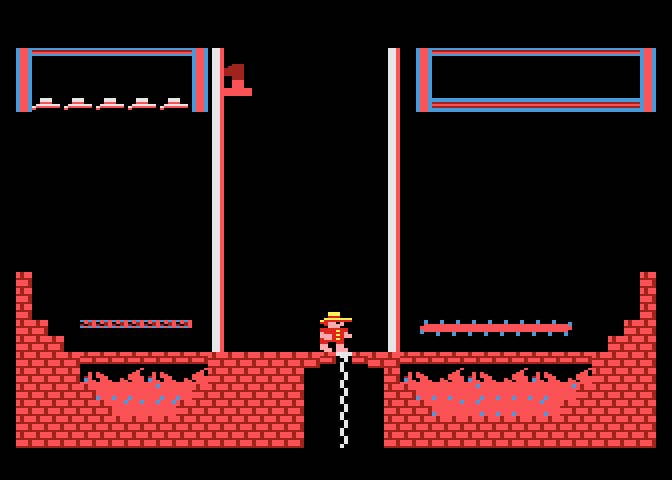

It's a shame that this revolution didn't really begin until the U.S. games industry had bottomed out. Impressive American creations like Pitfall II and H.E.R.O. didn't develop nearly the sort of fanbase that their British contemporary Jet Set Willy acquired over the pond, where the games industry was thriving rather than cratering. So, too, did Utopia's Atari 800 platform adventure Montezuma's Revenge go relatively under the radar.
More's the pity, because of all the exploratory platformers that debuted around the world in 1984, Montezuma's Revenge arguably had the most sensibly and thoroughly realized game world to explore. The entirety of the adventure transpired within the walls of a nine-level Mesoamerican pyramid, with the player entering from the peak and descending to the base level where, it was rumored, Montezuma himself awaited.

The game bore a lot of similarities to other platformers of the time, most notably Tim Martin's Spelunker and the Donkey Kong series, but more than anything else Montezuma's Revenge called back to Atari's Adventure for Atari 2600. In both games, much of the journey involved backtracking through a labyrinth of screens in search of properly colored keys to unlock doors that led further into the maze. And, much like the the brave square protagonist of Adventure, Panama Joe could collect limited-use weapons and tools to aid him in his descent into the deadly ziggurat.
Despite the spiritual connections to Adventure, Montezuma's Revenge designer Robert Jaeger didn't look to RPGs for play inspiration; his game made use the of the full vocabulary of platformers. Joe did the usual running and jumping; he could climb chains like Donkey Kong Jr.; he battled the directional tyranny of conveyer belts; he evaded all manner of creepy-crawly monsters; he made mad timed dashes to avoid plummeting into flames when disappearing platforms vanished beneath his feet; and he died pathetically if he fell from too great a height. There's even speculation based on an early prototype of the game that the mystical amulet, an item which destroyed enemies, was originally designed to look and work like the hammers in Donkey Kong.
In other words, Monezuma's Revenge brought together just about every idea that had ever appeared in a platformer to date, then mixed in some RPG influences by way of Adventure. It was quite possibly the most elaborate and complex platformer of its time, and you can find echoes of its design even today in indie titles like Spelunky. Sadly, the Atari crash took its toll on this game like so many others; Parker Bros. ended up scuttling plans for an Atari 2600 version of the game, dooming it to relative obscurity on a handful of computer platforms, which were still coming into their own in 1984. (Oddly enough, it eventually made its way to Sega Master System, of all things).
While Montezuma's Revenge may not get the love it deserves these days, it was an impressive leap forward for a budding genre. Next time you slice your way through a latter-day Castlevania game or check to see the progress on La-Mulana 2's Kickstarter campaign, take a moment to say a silent "thank you" to the game that paved their way by borrowing the best of two genres and turning them into something greater than the sum of those parts.

The Moment When Platformers Raced Into the Future
1984 may have seen console games dead in the water in the U.S., but elsewhere the medium rose to new creative heights. PCs saw an influx of talent as Atari developers abandoned ship; the UK had come into its own with its indigenous microcomputers; and the booming Famicom market supplemented Japan's already vital arcade scene.
If the decline of Atari and the collapse of American consoles and arcades marks the end of gaming's long-ago golden age, 1984 saw the dawn of a new silver era characterized in part by the division of video games into clear genres. The free-wheeling, anything-goes unpredictability of gaming's early days began to settle down into a time of refinement, as developers looked at the best and most popular kinds of games that had come before and considered how to build on those concepts and perfect them.
That held especially true for the platformer genre, which evolved considerably in 1984. The format's design evolved considerably from Donkey Kong and Pitfall! to Super Mario Bros., but it didn't happen in some sudden leap. A lot of talented people along the way applied considerable thought to the question of what makes a great game about running and jumping. "Exploration" seemed to be a popular answer, although you also had a few designers who dodged the question entirely.


Namco, on the other hand, wanted nothing to do with all that oblique searching and discovery. It hoped to reinvigorate the Pac-Man brand after the lukewarm reception the series' most sequel, Pac & Pal, received. The maze-chase genre seemed to have lost its luster, so instead of beating that particular horse into a miserable paste, Namco instead decided to take its most popular hero into a more character-focused adventure. What they came up with was Pac-Land, a rough but interesting proto-platformer that basically set the course for the next 10 years of action games.
Compared to the likes of Montezuma's Revenge and Jet Set Willy, Pac-Land appeared almost laughably simplistic in design. The dense, interconnected, multi-tiered maps of 1984's other notable platformers gave way to a straightforward obstacle course that felt like a regressive step to the original Pitfall! Pac-Man ran straight ahead from left to right, rarely needing to reverse course, leaping only to avoid monsters or clear gaps in the scenery. But of course, this fast-paced, no-frills style of game design was better suited to an arcade game, where players were lucky to survive for three minutes, had to pay for the privilege of each session, and thus could rarely afford the time and money needed to the master arcane complexities of something more involved.

Pac-Land revisited the Pitfall! style of action game as a coin-guzzling test of twitch reaction. Not surprisingly, it left other platformers of its era in the dust on a technical level, rendering its characters and their world in the style of a cartoon. While "it looks like a cartoon" has often been used to describe colorful video games, in Pac-Land's case it was a literal truth: Despite developing the game in its Japanese studio, Namco based its design on America's Pac-Man: The Animated Series Saturday morning cartoon by Hanna-Barbera. While a far cry from the hand-drawn authenticity of LaserDisc adventures like Dragon's Lair, Pac-Land managed to imitate the look of TV animation as well as could be expected from a sprite-and-tile based game crammed into about 64Kb of storage space. Bold, flat colors and crisp black outlines delineated the realm of Pac-Land, and the protagonist, his foes, and his family looked faithful to their television counterparts (all the way down to the ghosts' slouchy hats and Ms. Pac's pink thigh-high boots).
Pac-Land's visual design may look simplistic in hindsight, but it was quite impressive in its time. And it contains some surprising subtle visual details, including a vanishing point based on line-of-sight that causes the top edges platforms to be more visible the further they are from the center of the screen. Where other 2D games -- including the many to follow in Pac-Land's wake -- usually adopt a fixed side view or forced false perspective, Pac-Land's designers tried to incorporate a realistic line of sight despite the fact that the game's aesthetic actively imitated a cartoon.

That level of hidden quality defines Pac-Land, which ultimately proves to be a much less mundane take on the platformer than appearances might initially suggest. The later levels contain some really interesting and unexpected concepts, with challenges and obstacles even more sophisticated than the ones the legendary Super Mario Bros. would throw into the mix a year later. Eventually, the game even ventures into non-linear platforming and stages steeped in darkness, similar to Montezuma's Revenge.
But it's easy to overlook these features -- or never know about them at all -- because of Pac-Land's strange, repetitive structure. Each of its worlds is broken into a few sub-stages, but simply reaching the end of the stage (where, inexplicably, Pac-Man rescues a bizarrely out of place and decidedly human-looking faerie queen) isn't enough to take you to the subsequent level. Instead, you have to retrace your steps, running back through the freshly completed stages in reverse order with new obstacles and (again, inexplicably) a magical pair of boots that allows Pac-Man to fly. This effectively doubles the length of the game, and as you can see from this playthrough video, means a perfect playthrough of the game takes about half an hour to complete -- a truly bizarre design choice for an arcade game.
Unfortunately, there's just not enough to the game to justify the padding, and its finer moments are buried behind a firewall of tedium. More's the pity, because the adventure really does feel at once true to Pac-Man and inventive, combining the aesthetics of the cartoon (with ghosts attacking on pogo sticks, in cars, via UFO, and more) with the rules of the core arcade game (you can collect energizer pills and devour ghosts for stacking bonus points) and the infant platformer genre. The latter stages contain a lot of interesting ideas; it's just that getting there is a real chore, and the primitive controls and physics certainly don't help.
Still, looking at all the games that followed in Pac-Land's wake, it's hard not to think that pretty much every game designer in Japan didn't sit down with a Pac-Land cabinet, furiously scribbling notes. It was a technical triumph: Not the first game to incorporate scrolling backgrounds in place of single-screen transitions, but the first platformer to do so. This constant sense of movement (there weren't even separate transitions between sub-stages, as Pac-Man simply rested for a moment before advancing seamlessly to the next section of a level) truly liberated the genre, enabling Namco's designers to create a constant sense of danger from a never-ending succession of foes without fear of "cheap" deaths resulting from hazards lurking too close to the edge of the next screen transition.
Super Mario Bros. would define the mascot platformer a year later, but before that could happen, Pac-Land had to codify the ideas that Nintendo would perfect. Pac-Land hasn't withstood the test of time, and I can't imagine an awful lot of people saw all it had to offer even in its day. But it seems quite fitting that gaming's next major wave of design would be ushered in by Pac-Man, even if the character wouldn't stick around to see what he had heralded.







